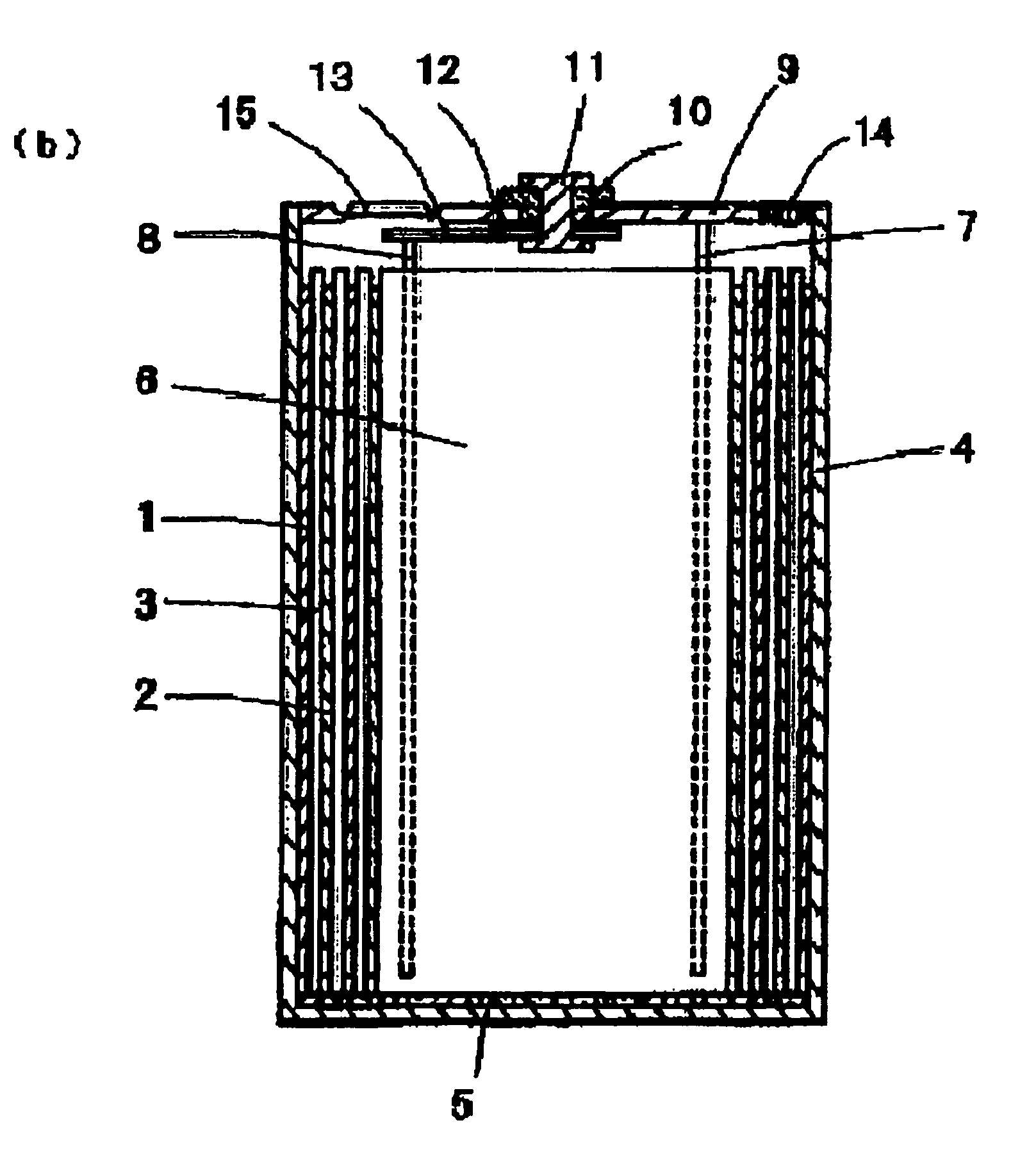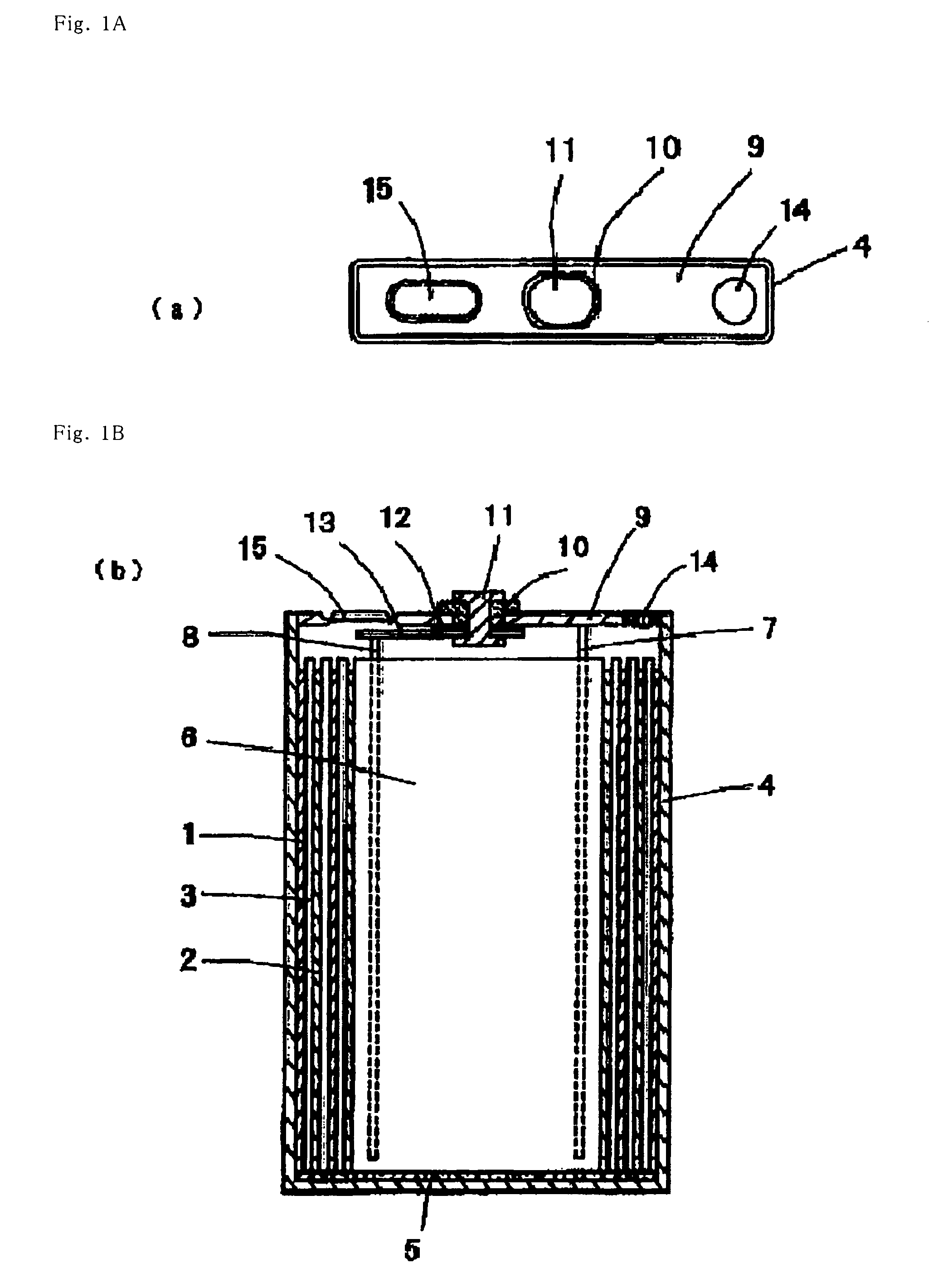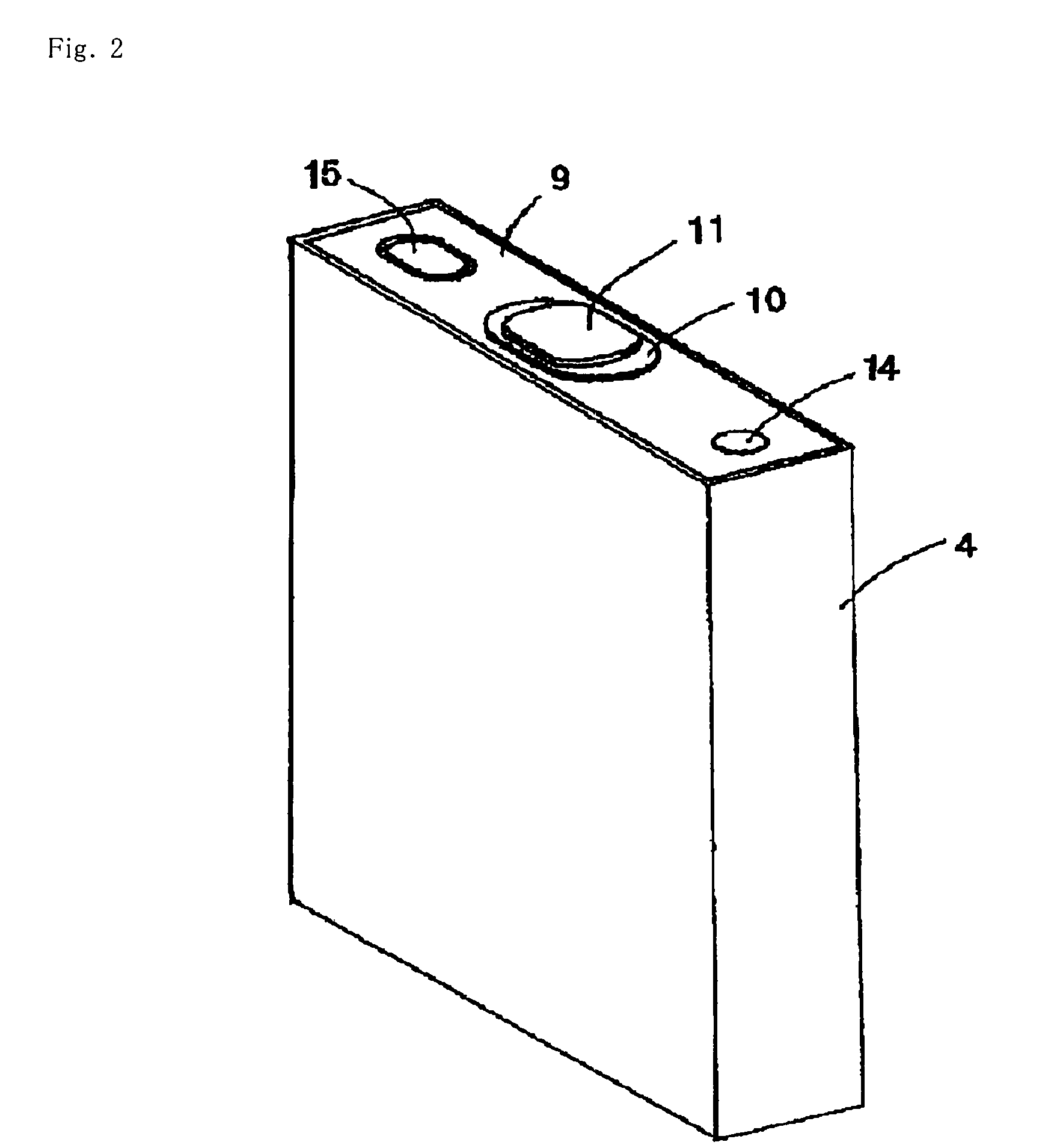Nonaqueous secondary battery and method of using the same
a secondary battery and non-aqueous technology, applied in secondary battery servicing/maintenance, cell components, electrochemical generators, etc., can solve the problems of insufficient capacity of secondary batteries, inability to easily make them compact or lightweight, and tend to increase power consumption of secondary batteries. , to achieve the effect of improving the safety of the battery, reducing the density of the positive electrode mixture layer, and increasing the proportion of co in the lithium-containing transition metal oxid
- Summary
- Abstract
- Description
- Claims
- Application Information
AI Technical Summary
Benefits of technology
Problems solved by technology
Method used
Image
Examples
example 1
Production of Positive Electrode
[0112]The lithium-containing positive electrode materials, LiCo0.9978Mg0.0008Ti0.0004Al0.001O2 (average particle size: 18 μm) as a positive electrode active material (A), LiCo0.9949Mg0.0024Ti0.0012Al0.0015O2 (average particle size: 5 μm) as a positive electrode active material (B), and LiCo0.9940Mg0.0027Ti0.0013Al0.0020O2 (average particle size: 1 μm) as a positive electrode active material (C) at a weight ratio of 77:19:4 were mixed. Then, 97.3 parts by weight of the mixture and 1.5 parts by weight of a carbonaceous material as an electric conductive aid were charged in a volumetric feeder as a device for supplying powder. An amount of a 12 wt. % solution of polyvinylidene fluoride (PVDF) in N-methyl-2-pyrrolidone (NMP) to be supplied to the feeder was adjusted to control a solid content in the mixture constantly at 94% by weight during kneading. While the amount of the mixed materials supplied in a unit time was controlled to a predetermined amount,...
example 2
[0128]A nonaqueous secondary battery was fabricated in the same manner as in Example 1 except that the positive electrode active material (A) was changed to LiCo0.9988Mg0.0008Ti0.0004O2 (average particle size: 5 μm), and the positive electrode active material (B) was changed to LiCo0.9964Mg0.0024Ti0.0012O2 (average particle size: 5 μm) and the positive electrode active material (C) as changed to LiCo0.9960Mg0.0027Ti0.0013O2 (average particle size: 1 μm).
[0129]The density of the positive electrode mixture layers (the density of the positive electrode) was 3.95 g / cm3 after the pressing under the same pressure as in Example 1. The thickness of the positive electrode mixture layers (the thickness of the layers on both the surfaces, i.e., the thickness obtained by subtracting the thickness of the aluminum foil layer of the positive electrode current collector from the total thickness of the positive electrode) was 130 μm.
example 3
[0130]A nonaqueous secondary battery was fabricated in the same manner as in Example 1 except that the positive electrode active material (A) was changed to LiCo0.998Mg0.0008Ti0.0004O2 (average particle size: 18 μm), the positive electrode active material (B) was changed to an oxide having the same composition as the positive electrode active material (A) and having an average particle size of 5 μm, and the positive electrode active material (C) was changed to an oxide having the same composition as the positive electrode active material (A) and having an average particle size of 1 μm.
[0131]The density of the positive electrode mixture layers (the density of the positive electrode) was 3.95 g / cm3 after pressing at the same pressure as in Example 1. The thickness of the positive electrode mixture layers (the thickness of the layers on both the surfaces, i.e., the thickness obtained by subtracting the thickness of the aluminum foil layer of the positive electrode current collector fro...
PUM
| Property | Measurement | Unit |
|---|---|---|
| voltage | aaaaa | aaaaa |
| particle size | aaaaa | aaaaa |
| particle size | aaaaa | aaaaa |
Abstract
Description
Claims
Application Information
 Login to View More
Login to View More - R&D
- Intellectual Property
- Life Sciences
- Materials
- Tech Scout
- Unparalleled Data Quality
- Higher Quality Content
- 60% Fewer Hallucinations
Browse by: Latest US Patents, China's latest patents, Technical Efficacy Thesaurus, Application Domain, Technology Topic, Popular Technical Reports.
© 2025 PatSnap. All rights reserved.Legal|Privacy policy|Modern Slavery Act Transparency Statement|Sitemap|About US| Contact US: help@patsnap.com



